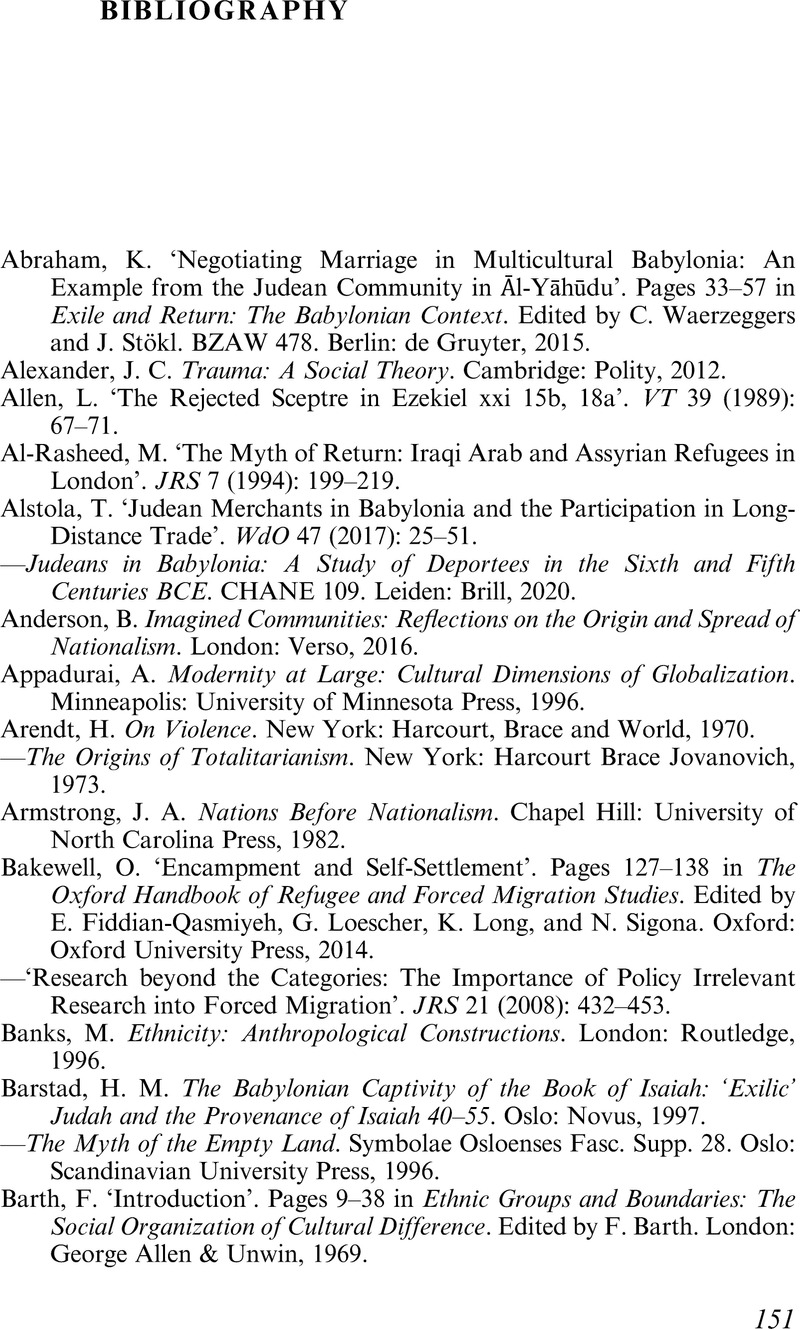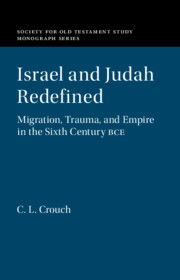Bibliography
Published online by Cambridge University Press: 05 August 2021
Summary

- Type
- Chapter
- Information
- Israel and Judah RedefinedMigration, Trauma, and Empire in the Sixth Century BCE, pp. 151 - 164Publisher: Cambridge University PressPrint publication year: 2021



